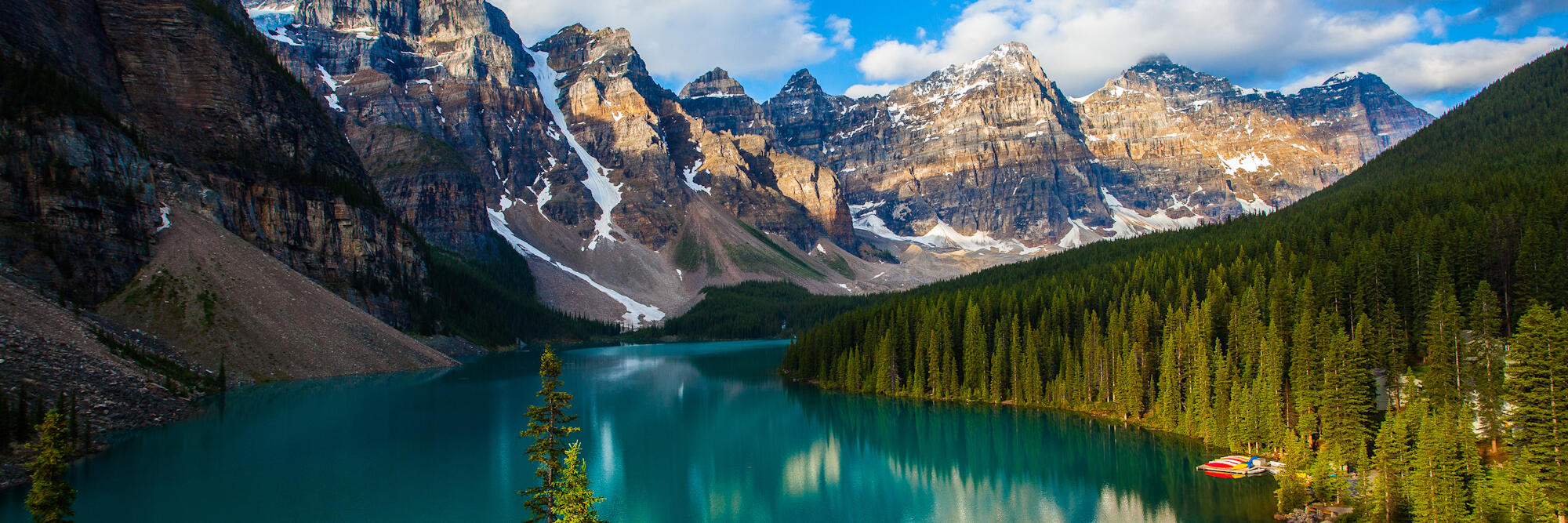…Rising from a deep curtsey, “Pleased to meet you Ma’am, and haven’t we been lucky with the weather for your Garden Party…”
It’s supposed to be a British characteristic – an obsession with the weather. Something that’s discussed in any situation, the Post Office queue, the bus stop, at the office, when meeting the Queen. OK, I can’t be certain about that last one, but you can imagine it can’t you?
It’s also something Brits and Canadians have in common, a propensity for weather analysis. This year, like last year and probably the year before, British conversation centred around the short spell of hot weather in April, which was in fact the summer for that year. Contrast this with the four distinct seasons we enjoy here in Ontario, punctuated by show-stopping thunderstorms and deadly tornadoes, and I think you’ll see what I mean when I say Canadians have more to talk about!
My family and I are based on the southern side of Ontario, about 30 miles east of Toronto, Canada’s commercial capital, and ninety odd miles north of Rochester, New York, across the lake. Because the province is so big, average temperatures can vary considerably from north to south. But on the whole, summers are HOT, winters are COLD, and when it rains (mostly in the spring and autumn) it RAINS! That’s what I love about Canadian weather – it doesn’t do anything half-heartedly!
Summer
Here on the shores of Lake Ontario, we experience high levels of humidity in the summer. The temperature combined with this humidity is measured on the Humidex and gives us a value reflecting what it “feels like”. During the summer months it can range anywhere from the thirties to mid-forties. The air is thick like gravy and heavy with heat and moisture, just like in a sauna.
The Toronto Public Health office issues Extreme Heat Alerts, depending on the temperatures. Everyone carries water with them and public pools extend their opening hours. Sitting in a stationary vehicle soon becomes unbearable so children and pets can’t be left unattended in cars, even for a short time. Anywhere without air-conditioning is uncomfortable. People who don’t have AC at home, head to shopping malls or public libraries to get some respite from the oppressive heat. AC is expensive to run constantly, so we spend a lot of time at the lake, staying cool in the breeze coming off the water. Parks usually have public washrooms, splash-pads and barbequing facilities so people head there with supplies for the day. Many Canadians head north, where it’s cooler, to the “cottage”, a cabin or house, usually near a lake, where they spend their time swimming, kayaking, BBQing and generally chilling out. You’ll find them there most weekends during the summer months and the patchy or non-existent phone/internet reception forces people to leave behind their everyday life and slow down.
Storms
The intense heat generates dramatic thunderstorms that roll in off the lakes. Personally, I love storms, I find the raw power of nature exhilarating and energising. The skies grow dark, like in a cinema before the film starts, and an eerie hush descends. Big, warm raindrops darken the paths and roads, quickening until they beat an insistent tattoo, causing the roads to become rivers and forcing drivers to pull over until the deluge slows and they can regain their visibility. Most roads have ditches on either side to accommodate the runoff from melting snow or rainstorms. It’s not unheard of to get hailstones the size of golf balls, even in summer. The thunder is so loud it causes the house to vibrate, rumbling and cracking overhead like I had only ever heard in the movies before. It’s like someone slamming a door right beside your ear - it literally makes you jump! The lightening snakes and forks across the sky for an hour or more and power cuts are frequent. All of a sudden the lights will be snuffed out, plunging homes and the highway into darkness, only to blink back on again in a few seconds or minutes.
Sometimes, instead of a full-on storm, we get some ominous rumbles and diffuse flickers of intra-cloud lightning, illuminating the clouds from within.
As the end of summer approaches so does the tornado season. The USA’s Tornado Alley extends into Ontario and the Prairie Provinces and Canada experiences at least 80-100 tornadoes every year, probably more, but due to the large expanses of uninhabited areas there’s no-one there to witness them! The last fatal tornado was on August 21st 2011 in Goderich, Ontario. The most deadly tornado occurred in Edmonton, Ontario in 1987 and left 27 dead and 257 people injured. I now understand why so many houses are built with basements, as this is the safest place to be in a violent storm.
Autumn
Once the temperatures drop back to the low twenties and below, the omnipresent, high-pitched song of the cicadas disappears for another year and Ontario enters the cooler, colourful autumn season. The trees take on red, russet and golden hues as they prepare to shed their leaves. The colours really are breathtaking, and this is definitely the time to visit the Provincial parks and forests to appreciate the beauty on a grand scale. People decorate their porches with scarecrows and pumpkins and clean out their garages, turn off outdoor water taps and ready their homes for the long winter ahead.
Down at the marina, recreational fishermen and sailors winterise their boats by securing them on parked trailers before putting antifreeze in the water tanks and supply lines, running additives through the gasoline in the engine, spraying fogging oil on the cylinders to protect them from rust and covering their boats with a tarp or shrink wrap, using a blow-torch to seal any openings. It’s a hive of activity as people hurry to beat the changing weather.
Winter
Winter, when it arrives, is long and brutal. The temperatures don’t get above freezing for weeks and snow is a constant. You won’t get more than a glimpse of the grass for a good few months and when you do it is brown and dead. I find my eyes yearning for some colour in the landscape, tired of just white/grey and blue.
Heating HAS to be left on all the time, not just to stop pipes etc. freezing, but because it is too cold to leave it off. It is illegal for electricity companies to disconnect non-paying customers as it could result in death. We began by switching our heating off when we went to bed but it would get so cold we changed to leaving it on low throughout the night. The only downside is that the majority of heating systems are forced air (providing air conditioning in the summer) and the hot air that is generated from the huge furnace in the basement is very drying. Floorboards contract and develop gaps as the moisture in the wood dries out and some of our wooden furniture had acquired cracks by the time spring came around. Best not to dwell on what it does to your skin, just moisturise, moisturise and moisturise some more!
Any regular outdoor activity like jogging or cycling soon becomes dangerous and difficult, but despite the grinding cold, there is a stark, crystalline beauty to these months. Winter walks by the lake are a welcome break to the enforced indoor confinement and, despite being shorter, most days are bright and sunny - it’s good to get out and grab a much-needed boost of vitamin D! People go ice-fishing, snow-shoeing or skating on frozen lakes - many people create ice rinks in their backyards to hone their hockey skills.
However cold it gets, life carries on. Before and after every snowfall, gritters and snow-ploughs are out in force, clearing and salting roads and walkways. Although a lot of people switch to snow-tires, they are not really needed for driving in town, only further out where the roads may not be cleared. Canada is well used to and well prepared for this kind of extreme weather. Toronto’s City Services offer help to the homeless population all year round, in the form of drop-in centres, emergency shelters and housing help, but during an Extreme Cold Weather Alert, attention shifts to getting people indoors. Outreach workers are on the streets trying to persuade people to come inside and transportation is provided to shelters. People are educated to carry emergency kits with them in their cars and to have 72 hours worth of essential supplies in their homes (water, fuel, food). Remote properties may become completely cut off due to impassable snow, and householders need to be prepared. Sometimes roads are closed and the occupants of lines of stranded vehicles have to find shelter in people’s homes, until the weather improves and the roads can be made usable again.
There are two factors that make winter tough to bear, and it’s not the snow or the low temperatures. The first is Wind-chill. It can cause temperatures to feel like the minus forties. You can be well wrapped up, but if any part of you is exposed it will quickly become very painful before going numb and causing MAJOR discomfort when the circulation returns. A ski-mask or balaclava is essential if you‘re going to be outdoors for any length of time.
The second is freezing rain. Yes, it may well mean an increase in temperature and have the added benefit of washing away some of the slush, but the sheet of black ice it leaves behind is lethal to both drivers and pedestrians. We soon learned to salt our driveway in advance. January and February are the coldest months. Some Canadians, known colloquially as Snowbirds, will migrate to warmer climes, returning only when the temperature starts to rise again.
Spring
Spring comes late to Canada, at least compared to what I was used to in the UK. There, the snowdrops, daffodils and heathers start to bloom in February/March. Here in Ontario, we can still be getting snow and frost up until the end of May. But you definitely know winter is behind you when the Black Fly season begins!
When the snow melts and the runoff fills the ditches, and all you can hear out walking is the sound of flowing water, then it’s only a matter of time! Blackfly season is said to be mid-May to mid-June and is over after six weeks. They breed in fast flowing rivers & prefer shade. They don't like wind, and are active only during the day. Only the females bite, but the males swarm and they are the fellas that can drive you insane. We used to see people out jogging, waving their hands manically around their heads and laugh at the sight – then you go outside and experience it yourself. One word of advice… don’t open your mouth.
Canada’s no place for the faint-hearted. But if you like a little excitement from your weather, you can’t go wrong here!



